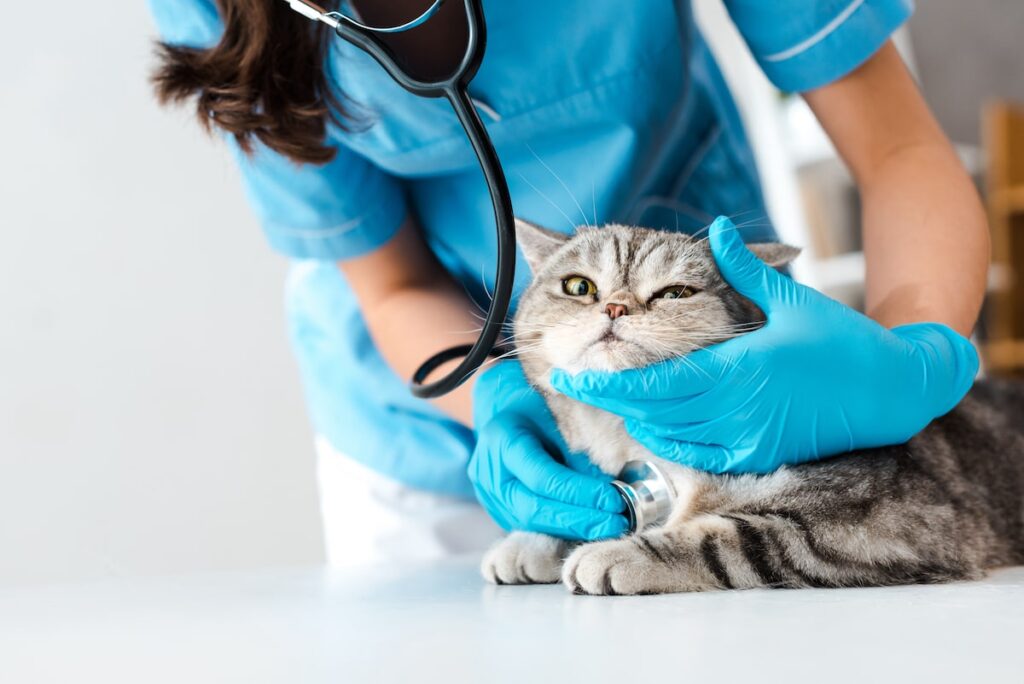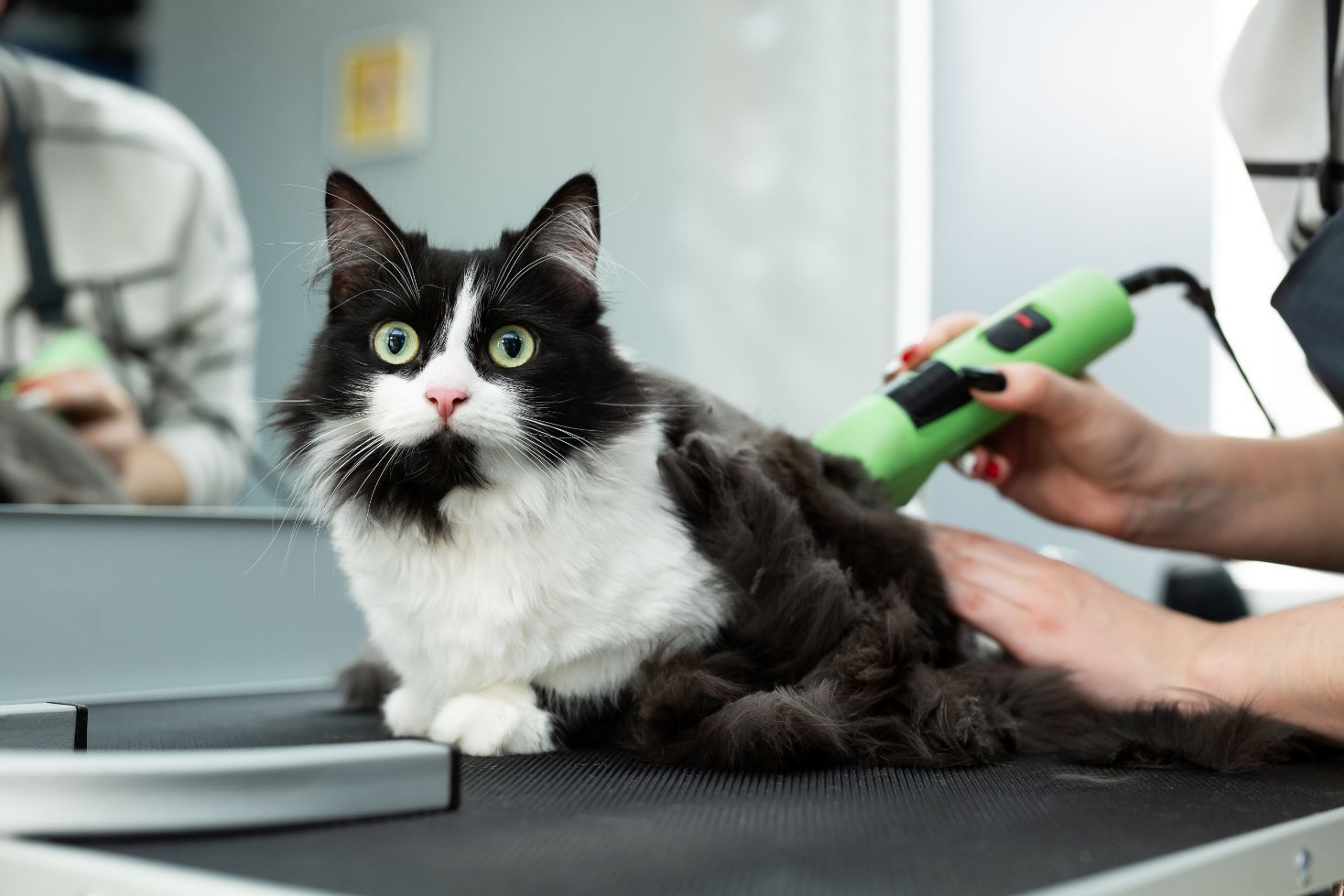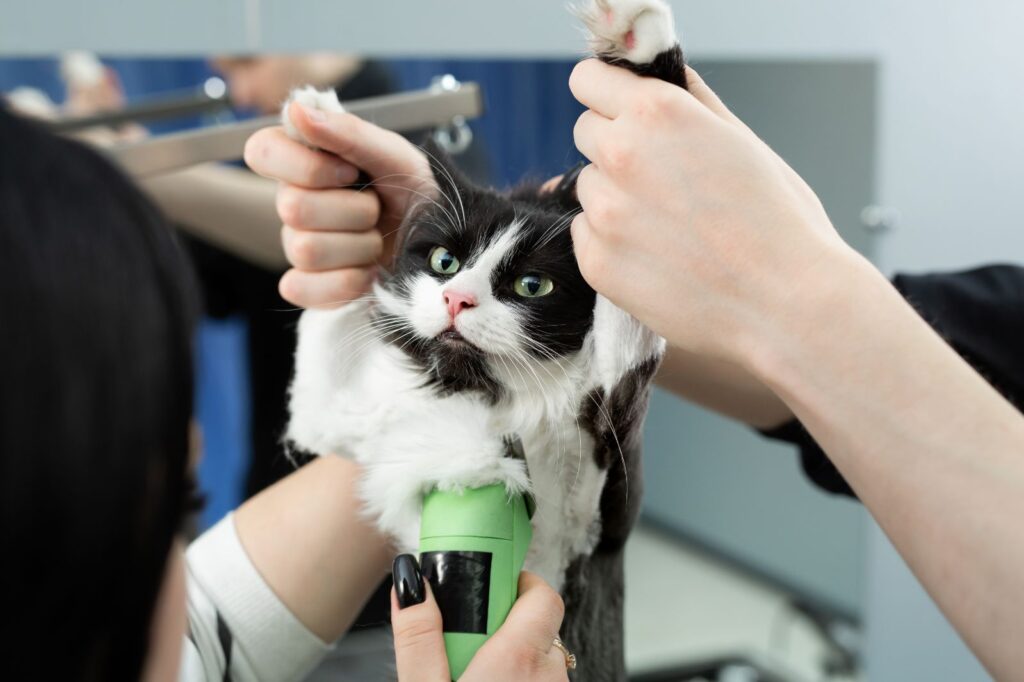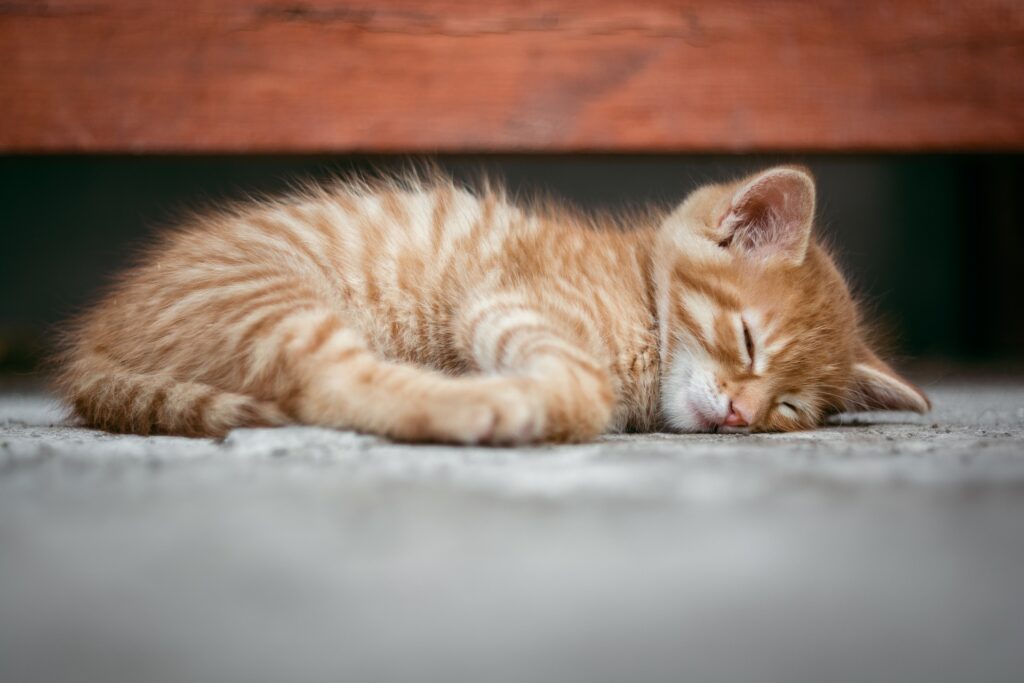Table of Contents
The last time you whisked your cat to a veterinarian clinic to get a splinter removed or have his festering wound cleaned, you may have noticed that the vet shaved the affected area before administering any treatments. This might get you wondering whether it’s perfectly okay to shave cats.
But can you shave a cat?
Cats generally do not require shaving. At least not for the reasons most people think they do.
In this post, we explore all the reasons for and against shaving a cat. We’ll also offer tips on how to go about shaving your feline housemate if you absolutely must do it.
Reasons for Shaving a Cat
1. It Helps Access the Skin for Treatment
Cats with wounds or other skin infections may need to be shaved before applying the right medication. The same is true for cats with splinters or those who may, for one reason or another, require surgical operations.
Shaving helps access the affected area and clean it before applying medications or conducting the required surgeries.
2. It Helps Deal with Parasites
External parasites, such as fleas and ticks, tend to hide under a cat’s thick fur, where they can easily go unnoticed. Shaving helps expose these parasites, making them easier to deal with.
Even without administering any drugs, the mere fact of exposing your cat’s skin to the sun can help combat many external parasites.
3. It Helps Deal with Matting
Matting is a common problem among long-haired felines. However, even short-haired cats experience matting from time to time.
There are other less traumatizing ways to deal with matting in cats. But if a cat’s fur becomes hopelessly entangled, then shaving may be the most viable solution.
Shaving is particularly an effective remedy for matted hair in cats who may experience trouble grooming themselves. These include older, overweight, and sickly cats. It’s also effective where the cat owner may not have the time or skills required in brushing their cat’s fur.
4. It Helps Solve Recurrent Hairball Issues
Hairball is a condition where a cat swallows a significant amount of hair during his regular grooming sessions. The swallowed hair forms balls in the cat’s stomach, which may cause intestinal blockage and interfere with food digestion.
One way to deal with hairballs in cats is by shaving the animal. The less hair there is on his coat, the less that will end up in his digestive tract.
5. It May Address Shedding
All cats shed considerably. However, some cat breeds are heavy shedders.
If you’re fed up with the mess created by the excess hair falling off your cat’s coat, you may consider trimming down his fur.
Reasons against Shaving a Cat
a) Shaving Doesn’t Address Temperature Regulation
There’s a common misconception that shaving might help keep a cat cool during summer. But this isn’t entirely true.
Cats have in-built thermoregulation mechanisms in their hair. A cat’s hair acts as a natural insulator, ensuring the animal remains cool in summer and warm in winter.
Besides, cats are smart enough to avoid overheating during summer by moving to shaded spots.
b) Shaving Exposes a Cat’s Tender Skin
It’s perfectly okay to shave a cat to access his skin before administering medication or undertaking a surgical procedure.
However, exposing a cat’s skin may also predispose the animal to damage by ultraviolet (UV) radiation from the sun and other UV-emitting sources.
This could further increase the risks of skin conditions like cancer and premature aging.
c) Shaving Can Be a Traumatizing Experience
Most pet parents who’ve attempted to shave their cats before would never want to do it again.
Not only is the experience stressful for your feline friend who can’t help but wonder if he’s being prepped for the abattoir. It’s traumatizing for the cat owner too, especially those unfamiliar with it.
d) Shaving Isn’t the Only Solution for Shedding, Matting, or Hairballs
It may be tempting to shave your cat as a way of dealing with excess shedding, matting, and hairballs. However, there are other interventions you could explore before subjecting your cat to a traumatizing shedding experience. Examples include routine grooming and brushing.
If you cannot find the time or do not have the requisite cat grooming skills, you can always hire a professional pet groomer.

Besides regular grooming, feeding your cat high-protein diets may help prevent hair problems. Note that protein forms the building blocks for hair and skin. In fact, animal hair is predominantly made from a type of protein known as keratin.
How to Shave a Cat
There are reasons for and against shaving a cat. If you believe that shaving is in your cat’s best interest, then proceed as follows;
i. Get the right supplies ready, including pet-approved hair clippers, hair brushes, rubber gloves, and towels.
ii. Choose the right location, such as an uncarpeted room.
iii. Choose the right working surface, such as a table or countertop.
iv. Get an extra pair of hands if you must, preferably someone the cat is familiar with.
v. Get the cat comfortable by brushing him gently or giving him treats if necessary.
vi. Brush the cat to remove any dirt or debris from his coat.
vii. Get down to shaving, ensuring you don’t get too close to the skin
Summary
Cats do not have a natural need for shaving. However, certain situations might make it necessary to shave your feline friend. The conventional wisdom is to consult your vet before undertaking this often-stressful task.



